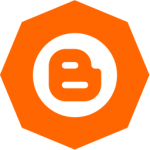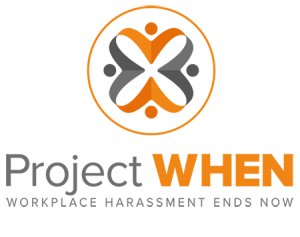How Los Angeles Department of Recreation and Parks (LADRP) Empowered Young Women Through Sports: A Communication Case Study
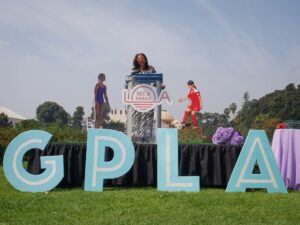 The Los Angeles Department of Recreation and Parks (LADRP) has long been a leader in innovative programming aimed at promoting health, wellness, and inclusivity in one of the nation’s largest cities. One of its standout initiatives, Girls Play Los Angeles (GPLA), exemplifies this mission by addressing gender disparities in youth sports participation. By combining affordability, targeted outreach, and community engagement, GPLA has become a model for how public agencies can use communication strategies to drive awareness, increase participation, and create lasting social impact.
The Los Angeles Department of Recreation and Parks (LADRP) has long been a leader in innovative programming aimed at promoting health, wellness, and inclusivity in one of the nation’s largest cities. One of its standout initiatives, Girls Play Los Angeles (GPLA), exemplifies this mission by addressing gender disparities in youth sports participation. By combining affordability, targeted outreach, and community engagement, GPLA has become a model for how public agencies can use communication strategies to drive awareness, increase participation, and create lasting social impact.
The Campaign: Girls Play Los Angeles
Launched to increase female participation in sports, GPLA aimed to address the gender gap in recreational activities across Los Angeles. The program offered subsidized sports leagues and fitness classes at more than 100 recreation centers, ensuring accessibility for all girls, particularly those in underserved communities. The campaign also emphasized creating a supportive environment where girls could thrive, build confidence, and foster healthy habits.
Key Strategies to Increase Participation and Awareness
1. Targeted Outreach and Inclusivity
GPLA’s outreach efforts focused on engaging girls from underserved communities who might not otherwise have access to recreational programs. The LADRP used demographic data to identify neighborhoods with low female sports participation rates and designed tailored communication strategies to reach these areas.
- Why It Worked:
- Flyers and promotional materials were distributed in multiple languages to reflect the diverse population of Los Angeles.
- Partnerships with local schools, community centers, and nonprofit organizations helped spread the word to families who could benefit most.
- Free introductory workshops and open house events reduced barriers to entry, giving girls and their families an opportunity to explore program offerings.
- Lessons for Other Agencies:
- Use local demographic data to identify and prioritize underserved communities.
- Partner with trusted community organizations to amplify your message.
- Ensure all promotional materials are accessible and culturally sensitive.
2. Subsidized Programming
A key feature of GPLA was its affordability. The program charged only $10 per season, making it accessible to families who might not otherwise afford organized sports.
- Why It Worked:
- Low costs removed a significant barrier to participation.
- Subsidized programs demonstrated the city’s commitment to equity and inclusivity.
- Lessons for Other Agencies:
- Consider subsidizing costs for specific demographics to make programs more accessible.
- Highlight affordability in all promotional messaging to attract participants.
3. Engaging and Empowering Messaging
GPLA’s communication strategy focused on empowering young girls. Marketing materials featured diverse participants and used messaging that celebrated confidence, teamwork, and achievement.
- Why It Worked:
- Positive, empowering language resonated with girls and their families.
- Representation in promotional materials ensured participants felt included and welcomed.
- Lessons for Other Agencies:
- Craft messaging that aligns with the values and aspirations of your target audience.
- Use inclusive visuals and language to appeal to a broad demographic.
4. Gathering and Acting on Feedback
GPLA prioritized gathering feedback from participants and their families to continuously improve the program. Surveys, focus groups, and informal conversations at recreation centers provided valuable insights into what was working and where adjustments were needed.
- Why It Worked:
- Regular feedback loops ensured that the program met the needs of its participants.
- Acting on feedback built trust and reinforced the city’s commitment to its community.
- Lessons for Other Agencies:
- Use multiple channels to gather feedback, including online surveys, in-person discussions, and social media polls.
- Clearly communicate how feedback has been implemented to show participants that their voices are heard.
5. Fostering Long-Term Engagement
Beyond initial participation, GPLA focused on creating pathways for sustained involvement in sports and recreation. Programs included skill development workshops, mentorship opportunities, and leadership training for older participants to transition into coaching or volunteering roles.
- Why It Worked:
- Providing growth opportunities encouraged participants to remain engaged beyond a single season.
- Mentorship and leadership roles helped build a sense of community and responsibility among participants.
- Lessons for Other Agencies:
- Develop programs that allow participants to progress and deepen their involvement.
- Offer leadership and mentorship opportunities to foster long-term engagement.
 Results and Impact
Results and Impact
The GPLA campaign delivered measurable success and significant community impact:
- Increased Participation:
- Female participation in LADRP sports programs grew from 22% to 45% as a result of GPLA, with tens of thousands of girls enrolled annually.
- Improved Accessibility:
- Over 100 recreation centers offered GPLA programs, ensuring geographic accessibility for families across the city.
- Stronger Community Engagement:
- Partnerships with schools and nonprofits strengthened community ties and expanded the program’s reach.
- Empowerment and Growth:
- Participants reported increased confidence, better teamwork skills, and a stronger sense of belonging.
- Enhanced Future Opportunities:
- Leadership pathways through mentorship programs helped participants gain valuable skills and experience, preparing them for future roles in sports or community leadership.
Takeaways for Public Agencies
The success of GPLA provides valuable insights for other departments of recreation and parks seeking to promote equitable access to sports and wellness programs:
- Prioritize Inclusivity:
- Identify and address barriers that may prevent underserved populations from participating in your programs.
- Engage the Community:
- Collaborate with schools, nonprofits, and other local organizations to expand outreach and build trust.
- Highlight Affordability:
- Ensure cost is not a barrier by offering subsidies or sliding-scale fees.
- Craft Empowering Campaigns:
- Use messaging that uplifts and inspires participants, particularly when targeting groups historically excluded from similar opportunities.
- Gather Feedback and Adapt:
- Continuously solicit input from participants and adjust programs to better meet their needs.
- Create Pathways for Growth:
- Foster long-term engagement by offering opportunities for skill development, leadership roles, and continued participation.
- Celebrate Success Stories:
- Highlight individual achievements and program milestones to sustain momentum and inspire others to participate.
Conclusion: A Model for Equity and Engagement in Public Recreation
Girls Play Los Angeles is a shining example of how a well-executed communication campaign can drive meaningful change. By prioritizing inclusivity, affordability, and empowerment, the LADRP successfully increased female participation in youth sports and created lasting positive impacts in the community.
For other public agencies, the lessons from GPLA are clear: understand your audience, remove barriers to access, and foster a sense of belonging through intentional communication and programming. With these strategies, any department of recreation and parks can replicate GPLA’s success and build stronger, healthier communities.
As communities increasingly look to public agencies for support in fostering wellness and inclusivity, initiatives like GPLA serve as both inspiration and a blueprint for success. Whether through strategic outreach, affordable programming, or empowering communication, there are endless opportunities to create meaningful, lasting change in the lives of those served.
Ready to Elevate Your Agency’s Public Communication?
We understand the unique challenges state and local government agencies face—from complex issues to diverse community needs. Our comprehensive approach can help you transform the way you connect with constituents, improve transparency, and highlight the valuable work your agency does every day.
Interested in learning more? Reach out to us today for a consultation. We’d love to discuss how our services can support your goals and help you build lasting trust with the communities you serve.


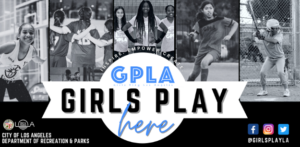
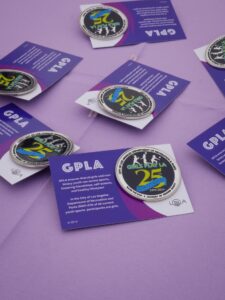 Results and Impact
Results and Impact
